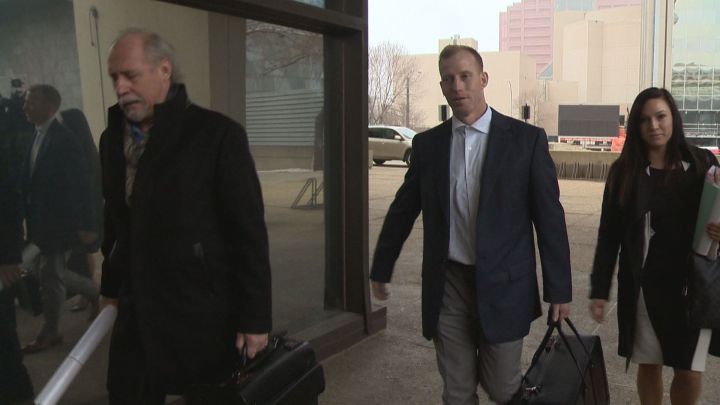A judge is allowing cameras in an Edmonton courtroom for his verdict Thursday in the case of Travis Vader.

Vader has pleaded not guilty to two counts of first-degree murder in the 2010 deaths of Lyle and Marie McCann, who disappeared on a camping trip. Their bodies have never been found.
WATCH LIVE: Travis Vader double murder trial verdict to be delivered live on camera Thursday
BELOW: Some other instances where cameras have been allowed in Canadian courtrooms:

Get daily National news
Supreme Court of Canada: Cameras were allowed in the country’s top court in 1981 to hear arguments over the patriation of the Constitution. The high court has broadcast most proceedings since 1995.
Alberta: Cameras were allowed in for an inquiry into a matter involving the Alberta Securities Commission in 1980 and a fatality inquiry into the death of Connie Jacobs in 1999. Jacobs and her son were shot and killed by police on a reserve west of Calgary.
British Columbia: In 2000, closing arguments and jury instructions were broadcast in a migrant smuggling case. Closing arguments were also broadcast in 2011 when the province asked the court for its opinion on the constitutionality of Canada’s polygamy laws.
Manitoba: The province has had a cameras-in-the-courtroom initiative since 2014. No proceeding which involves testimony is part of the project, but in April 2014 the cameras rolled as Cassandra Knott was acquitted of the second-degree murder of her husband. Cameras have also been allowed for an appeal hearing, a docket hearing and for arguments over the legality of a provincial sales tax increase.
Ontario: Court of Appeal review hearings for Steven Truscott and William Mullins-Johnson were broadcast in 2007. Both men had murder convictions overturned.
READ MORE: Why televising the Travis Vader verdict could lead to more cameras in courts

Comments